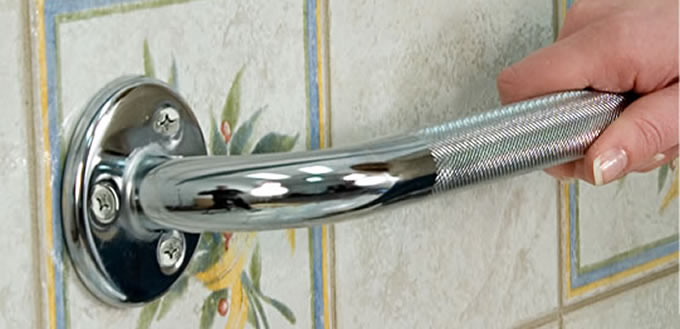From: Lori Greene
Re: Tactile Warning
Tactile warning (knurling or abrasive surface) on levers is used to warn visually impaired people of hazardous rooms or areas. There is confusion surrounding this requirement for two reasons.
One issue is that this requirement has been removed from ICC/ANSI A117.1 (nationa[ accessibility standard), and is not included in the ADA guidelines, but many code officials do not realize this and still try to enforce the requirement. The other issue is that when a local code or standard calls for tactile warning, it doesn’t specifically define which rooms require it.
The 1986 edition of ANSI A117.1 (accessibility standard) contained the following language: "4.27.3 Tactile Warnings on Doors to Hazardous Areas. Doors that lead to areas that might prove dangerous to a blind person (for example, doors to loading platforms, boiler rooms, stages, and the like) shall be made identifiable to the touch by a textured surface on the door handle, knob, pull, or other operating hardware. This textured surface may be made by knurling or roughening or by a material applied to the contact surface. Such textured surfaces shall not be provided for emergency exit doors or any doors other than those to hazardous areas."
This requirement has been removed. The 1992 and 1998 editions of the same publication DO NOT contain this requirement. The 1994 edition of the ADA guidelines do not require the tactile warning, and neither do the proposed new ADA guidelines. The ADAAG Manual states "In the absence of a clear consensus on the need or specification for detectable warnings at doors and stairs, no requirement has been specified in ADAAG. Earlier accessibility standards once contained a requirement for these areas." The Massachusetts Architectural Access Board publication 521 CMR contains the following requirement for tactile warning:
“26.11.4 Special Hardware: Doors opening into hazardous areas shall have door-opening hardware which is knurled or has a roughened surface to give tactile warning to persons with visual impairments. Hazardous areas shall include but not be limited to loading platforms, boiler rooms, and electrical equipment rooms.”
The Connecticut Supplement to the State Building Code (June 15, 1994) contains the following requirement for tactile warning:
“4. (Add) Section 4.27.1 Tactile Warnings. All doors leading to rooms or spaces containing hazardous operations, equipment or processes shall be equipped either with round knob latchsets with knurling or other tactile identification, or be under permanent lock and key arrangements.”
The bottom line is that none of the current editions of national accessibility guidelines require tactile warning, but some local jurisdictions do. Since the local codes typically are not specific about which rooms are considered hazardous, this is left to the interpretation of the code official.




